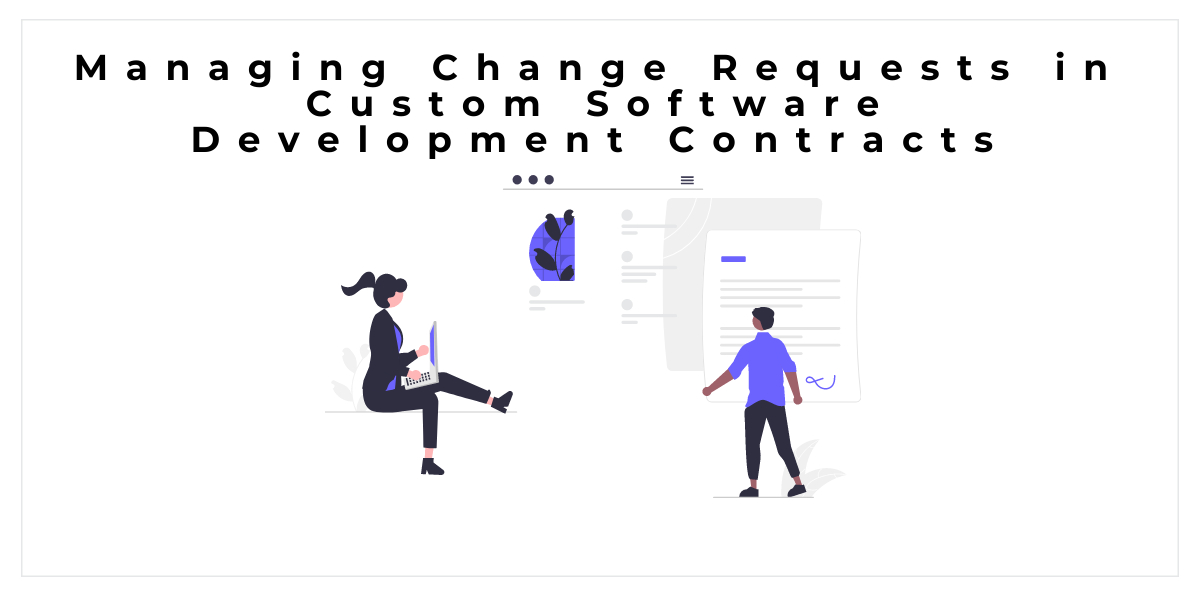In the dynamic realm of custom software development, change is inevitable. As projects progress, requirements evolve, and stakeholders seek adjustments to align with their evolving needs. Effectively managing change requests within the framework of software development contracts is crucial to maintain project integrity, deliver exceptional solutions, and foster client satisfaction.
This article delves into the intricate landscape of managing change requests in custom software development contracts, where the delicate balance between adaptability and contractual commitments holds the key to successful project execution.
By exploring strategies that harmonize the evolving needs of clients with the constraints of contractual agreements, we aim to provide insights into achieving seamless project delivery in the face of changing circumstances using some purpose-led software development solutions.
Through a collaborative approach that embraces effective communication, meticulous evaluation, and efficient implementation, development teams can navigate the challenging terrain of change requests while upholding contractual obligations.
Let's dive into the intricacies of managing change requests in custom software development contracts and discover how organizations can adapt, evolve, and deliver exceptional software solutions while maintaining contractual integrity.
What are Change Requests in Custom Software Development Contracts?
Change requests in custom or customised software development contracts refer to the formal process through which clients or stakeholders propose modifications or additions to the original scope, requirements, or functionality of a software development project. These requests arise when there is a need to adapt or enhance the software solution to better align with evolving business needs, industry changes, or user feedback.
Change requests can encompass various aspects, such as altering existing features, adding new functionality, modifying user interfaces, adjusting integration requirements, or addressing performance and security enhancements. These changes may be prompted by factors like changing market conditions, emerging technologies, or unforeseen business requirements that arise during the development process.
Managing change requests within the context of a software development contract is essential to maintain project alignment, ensure client satisfaction, and adhere to contractual obligations. The process typically involves evaluating the feasibility and impact of each change, considering its effect on the project timeline, budget, and overall objectives. Once assessed, change requests may be prioritized, negotiated, and approved before being implemented by the development team.
By effectively managing change requests in customised software development contracts, organizations can strike a balance between accommodating client needs and maintaining project integrity, ultimately delivering high-quality software solutions that meet evolving requirements while upholding contractual commitments.
Change requests
1. Clearly define scope and specifications
From the outset, it is essential to establish a comprehensive scope and clearly define the specifications of the customised software development project. This step minimizes the likelihood of frequent change requests by ensuring a mutual understanding between the client and the development team.
2. Implement a change management process
A robust change management process is crucial to effectively manage and evaluate change requests. This process should include documentation, formal submission, impact assessment, and approval procedures. By adhering to a structured system, the development team can mitigate risks and maintain control over the project's timeline and resources.
3. Assess feasibility and impact
Each change request must be carefully evaluated for feasibility and impact on the project's timeline, budget, and overall objectives. A thorough analysis helps identify the ramifications of accommodating the change and allows for informed decision-making. Collaboration between project managers, developers, and stakeholders is key during this evaluation process.
4. Prioritize changes based on business value
When faced with multiple change requests, it is crucial to prioritize them based on their business value. Prioritization enables the development team to focus on changes that have the most significant impact on achieving project goals and meeting client expectations. This approach ensures efficient resource allocation and minimizes disruption to the project's timeline.
5. Communicate and negotiate
Open and transparent communication with the client is essential throughout the change request process. Regular updates on progress, feasibility assessments, and potential impacts help manage expectations and foster a collaborative environment. Negotiation may be necessary to strike a balance between client requirements and project constraints, ensuring a win-win outcome.
6. Proper documentation and contract amendments
To maintain clarity and protect all parties involved, documenting change requests, their approval, and any associated contract amendments is crucial. These records provide a reference point for future discussions and serve as a legal safeguard. Clear documentation helps prevent misunderstandings and disputes, fostering a professional and trustworthy relationship.
7. Efficient change implementation
Once a change request is approved, efficient implementation becomes paramount. The development team should ensure proper testing, quality assurance, and seamless integration of the requested changes. Timely and effective execution helps maintain project momentum and enhances client satisfaction.
Synopsis
Managing change requests in custom software development contracts requires a structured and collaborative approach.
By defining scope, implementing a change management process, assessing feasibility, prioritizing changes, communicating openly, documenting decisions, and executing changes efficiently, development teams can navigate change requests successfully.
This approach enables the delivery of high-quality software development solutions that meet evolving client needs while adhering to contractual agreements.








